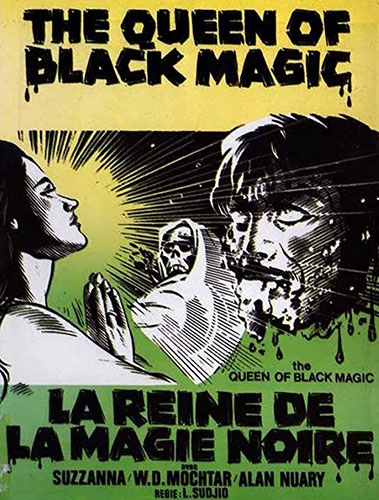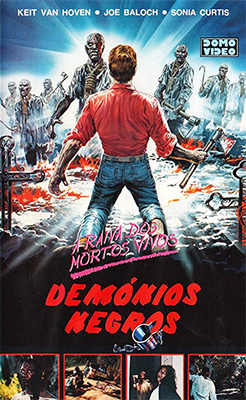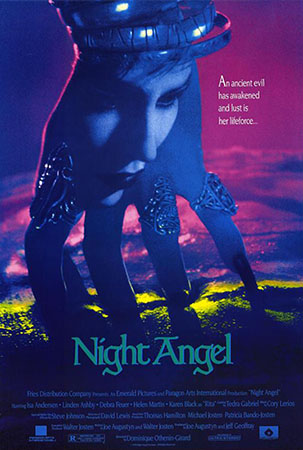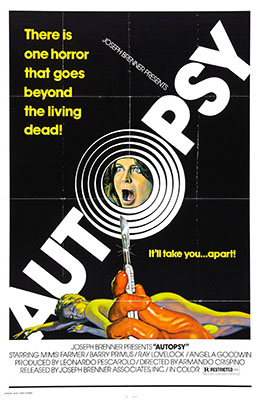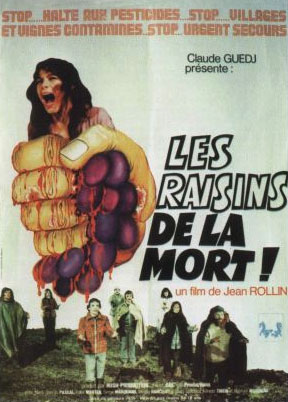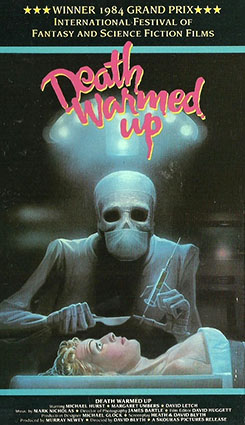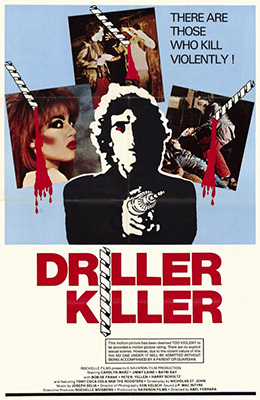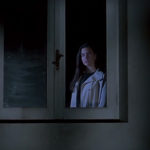
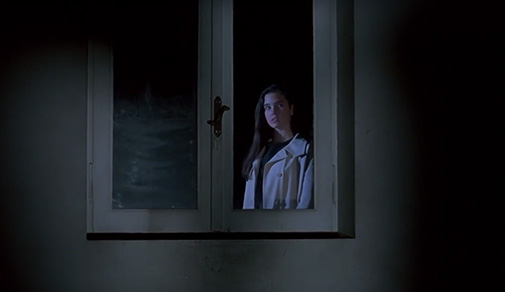
[Reader beware. There are major spoilers coming up.]
Whenever the wind is in the trees, I think of Phenomena and nothing feels right or normal in the best way. Released in 1985, Dario Argento’s twisted fairy-tale masterpiece has always had a strange effect on me. It’s a ridiculous world of tangible impossibilities with an atmosphere of doom and insanity hanging around every corner. Imagine if your fantasy world got caught in the kitchen disposal and then you were able to film it; the end result would look a whole lot like Phenomena.
The film starts as Jennifer Corvino (played by Jennifer Connelly), the daughter of a famous actor, arrives at a Swiss boarding school. Jennifer has a sleepwalking problem and one night while she is wandering around the closed section of the school, she witnesses a girl being murdered by a psychotic killer. She meets wheelchair bound Professor John McGregor (Donald Pleasence), an entomologist living with his helper chimpanzee who’s been enlisted by the police to help track down the murderer. He seems to think that Jennifer’s sleepwalking is a symptom of burgeoning mental powers. McGregor’s hypothesis proves to be true as Jennifer soon realizes that she can communicate with insects. They decide to use her strange gift to catch the killer.
When the unlikely duo gets too close to discovering the truth, the killer comes after Professor McGregor. Now alone against a sadistic psychopath, Jennifer mistakenly takes shelter with Frau Brückner (Daria Nicolodi) who turns out to be the mother of the deformed creature that has been doing all the killing. With the help of a detective (Patrick Bauchau) and her insect helpers, Jennifer just barely escapes with her life. Frau Brückner kills the detective and comes looking for our young heroine. Jennifer’s ultimate rescue comes in the form of John McGregor’s chimpanzee that gets revenge for its slain master by taking a straight razor to the insane woman.
When I was 12 or 13 years old, I was intrigued by a segment on an MTV show called “Stephen King’s World of Horror” about Dario Argento. It talked about a film called Creepers and I sought it out. The cover of the VHS tape entitled Creepers really blew my mind. It features a painting of Jennifer Connelly (“The chick from Labyrinth!” I thought to myself) holding a handful of flies and other insects. These creepy crawlies were flying out of her half rotted face and I was completely mesmerized by the sickening beauty of this image. At this point in my young life, my parents were allowing me to rent whatever horror films I pleased. They had given me their old VCR to hook up in my room so I had absolutely no trouble getting this particular flick by them. There was a mix-up at the video store and the film Creeper (AKA In the Devil’s Garden AKA Assault from 1971) was in the Creepers case by mistake. Once that was resolved, I finally had the film in my hands.
Little did I know what awaited me on that tape. Creepers is actually Dario Argento’s giallo-fantastico masterpiece Phenomena, minus about 28 minutes of footage. A few very brief shots of gore had been trimmed but most of the cuts had to do with the plot and Jennifer Corvino’s character development. The most shocking moments in the film: the big reveal of Frau Brückner’s murderous and hideously deformed child and Jennifer falling into a pit of rotting corpses, remained intact on the rental copy I watched back in the day.
I love Dario Argento and Franco Ferrini’s childish plot. Everything that takes place in Phenomena, no matter how ludicrous, made perfect sense to my young mind. Even now, I’ll catch myself just nodding and smiling as the events unfold that would likely cause most rational folks to start throwing furniture at the screen. How is it that a girl with the ability to communicate telepathically with insects just happens to become best buds with a crippled entomologist who just happens to have been researching the psychic powers of insects throughout his career? I guess that is a small concession in a film that also features a dang chimpanzee armed with a straight razor that brutally savages his master’s murderer.
I especially love the film’s minimalist set design of the finale. The brilliantly lit monochromatic and sparsely decorated walls help focus the viewer’s attention on the action and give it a stark bleakness. Phenomena also has a hypnotic quality, a morbid melancholy (a little something which I call “The Vibe”) that I’ve rarely found in American horror films. Similarly, Joe D’Amato’s horror films often have little to no set design and I can’t help but feel this perfectly communicated sense of claustrophobia and horror in my bones. I’m sure one could assume these things were kept simple to keep production costs low but so be it, I’m already smitten.
The music of Phenomena ranges from spectacular to totally inappropriate. Simon Boswell and Goblin contribute the ethereal pieces and the horror stingers. And though they sound great where they are placed within the film, “Flash of the Blade” by Iron Maiden and “Locomotive” by Motörhead are disruptive to the flow of the rest of the soundtrack. Now don’t get me wrong, I was a metalhead during my early teens and the inclusion of these songs only made me love this movie all the more. But even as a youngster, I knew that “Flash of the Blade” has nothing lyrically that fits with what’s happening onscreen. Argento’s indiscriminate love of (often cheesy) heavy metal rears its ugly head again in his next film Opera but with less or more success depending entirely on your taste in metal.
A classic Italian horror film needs a great cast and Phenomena is certainly no slouch in that department. Leading the cast is a young Jennifer Connelly (who Argento spotted in Once Upon a Time in America and decided to cast her) and Donald Pleasence who was serving time in Italy between Halloween sequels. Daria Nicolodi is totally batshit crazy as Frau Brückner, one of my favorite villainesses ever captured on film. Belgian born actor Patrick Bauchau (of “Carnivale”) plays Inspector Geiger, the detective who almost saves the day but who dies horribly (off camera).
Sadly, Oscar winner Jennifer Connelly has since distanced herself from Phenomena and her time spent in Italy. In a 2004 interview with Vogue, she disses the film and her performance in it saying it was little more than an excuse to vacation in Europe. I can’t help but laugh at this because this is best thing Connelly has ever done or ever will do. No, I’m not kidding. As far as I’m concerned, Jennifer Connelly’s career tanked in 1986 with only a few minor points of interest since (Mulholland Falls, Dark City and the Dark Water remake). There’s still a chance for her to redeem herself but only if she returns to Italian horror.
One of the greatest character actors of all time, Donald Pleasence, delivers his performance of Professor John McGregor with his usual morbid sincerity. Pleasence is totally convincing as the renowned entomologist even while he is dishing up the corniest dialogue. He easily mesmerizes the viewer into believing his every word. In an interview in Profondo Argento, the actor mentions that Phenomena had one of the silliest scripts he’d ever read. I find this very curious. Perhaps he’d forgotten about Paganini Horror and Fatal Frames of hadn’t made them yet at the time of the interview. Those two totally wacko Italian horror films are easily sillier than Phenomena.
Near the end of the film, we have traveled with Jennifer through windswept Sweden, entered a girls’ school with almost no discernible curriculum, been knocked with her into a pit full of carrion and squirming larvae, and joined in her desperate psychic cry to her insect brethren to chew the face off her diminutive tormentor. Moments later, everything changes as Jennifer is swimming to shore thus washing away the horror (and filth from the corpse pit) and we’re led to believe that the horror is finally over. For me, this ethereal scene is the most resplendent of the film and is a transcendent landmark for Italian horror. This peaceful moment is interrupted when Jennifer’s father’s lawyer who shows up to take her home. No easy denouement here as Argento has one more showstopping setpiece tucked up his sleeve.
Phenomena is a feverish, outrageous, and gory maggot party that will always be at the top of the list of my favorite horror movies of all time. I cannot stress enough how badly you need to see this film or see it again if you’ve already taken the plunge. There’s a whole lot of ugly, a whole lot of weird, and a whole lot of beauty packed into Argento’s whacked out beast. This film stands very tall among the dozen or so horror flicks that had a huge impact on my young brain. Phenomena’s somnambulistic evil grows as the years go by and every time I am drawn back in, I get just a little closer to happily losing my mind.
